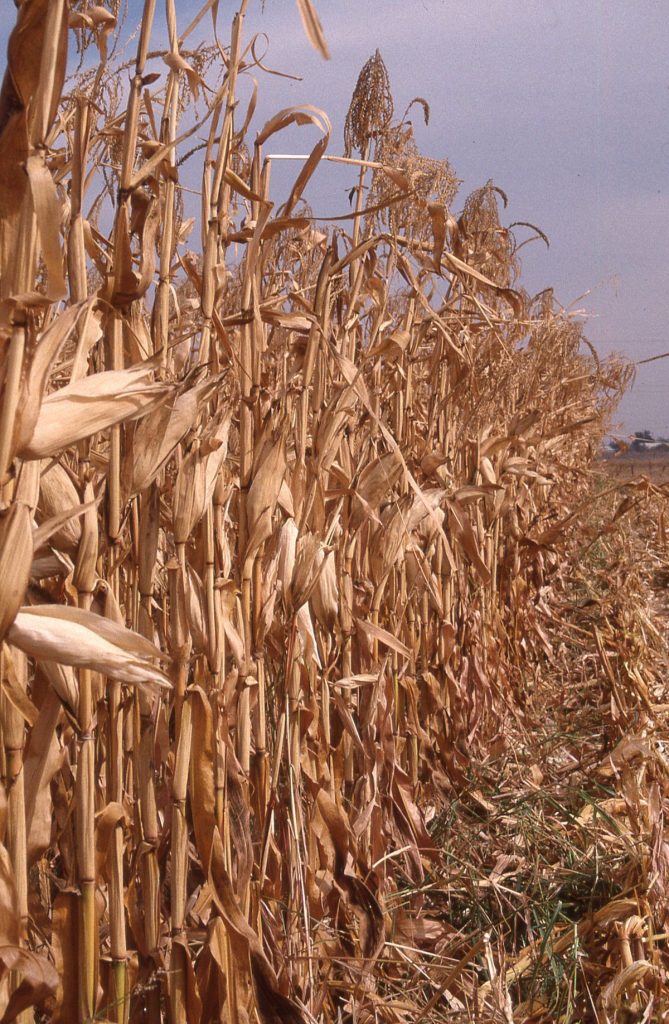Growing Methods
Every farm has its unique conditions: weather, soils, and water. Here in Northern California with its wet winters and hot dry summers, we have developed specific organic farming practices for all the crops we produce. We feel that everyone should have the opportunity to learn more about how and where their food is grown.
Organic Farming
If you asked ten organic consumers why they buy organic you might get a range of responses. Answers may include personal health, taste, protecting the environment, or any combination of these.
If you asked an organic farmer to define organic, you would get get directed to the definitive standard of organic production in the United States, the USDA National Organic Program Standards (NOP). These standards have been developed over many years by a deliberative process by farmers, environmentalists, retailers, and consumers. These standards provide the consumer with confidence that the organic products they purchase have been produced according to defined and verified practices.
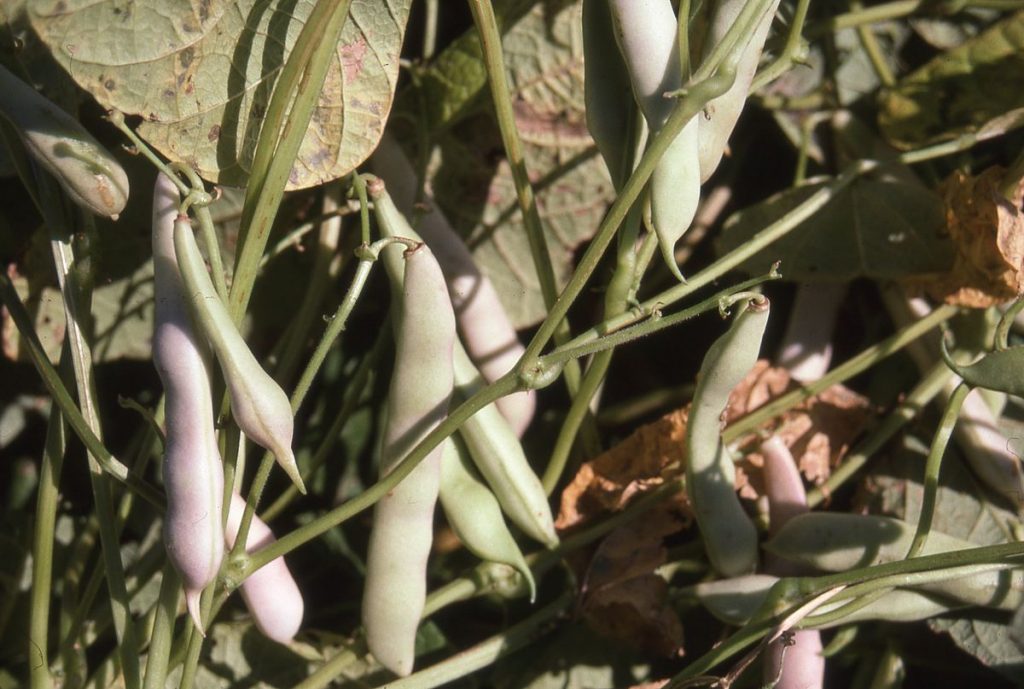
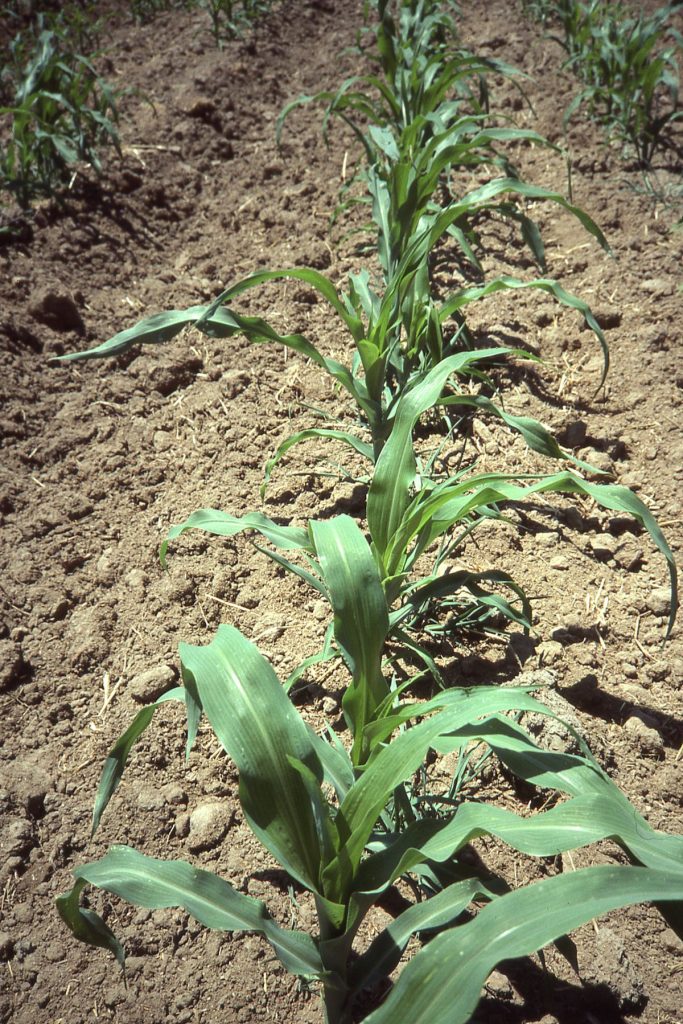
One of the main points of the Organic Standards is that farmers cannot use synthetic chemicals such as pesticides, herbicides, and fossil fuel derived fertilizers. Instead they only can use natural products, such as manures, compost, and some mined minerals. Allowed pest control materials are mostly natural substances. Other requirements for organic food production are:
- The use of crop rotations, cover crops, and plant/animal materials to build a healthy soil system
- The use of crop rotations to help prevent pests, weeds, and disease
- Managing the farm system to improve soil organic matter
- The use of organic seed when commercially available
- The use of non-GMO (genetically modified organisms) seeds
- Certifying a 3 year time period has passed since the last application of a prohibited material before organic crop is harvested
Having covered the basics of organic production, let’s look at what makes Pleasant Grove Farms unique, and how some of these points play out here on our farm.
Crop Rotation and Cover Crops
Crop rotation and cover crops are the essence of our farming system. Crop rotation is growing a different crop every year in the same field, while a cover crop is a single crop grown for the purpose of improving the soil and providing fertility to following cash crops. Let’s focus on the cover crop portion of the crop rotation first.
Every fall we plant a vetch cover crop on almost every acre of our farm. Vetch is a legume, which can take nitrogen from the air and incorporate it into its cells, and is one of the most important cover crops found on the farm.
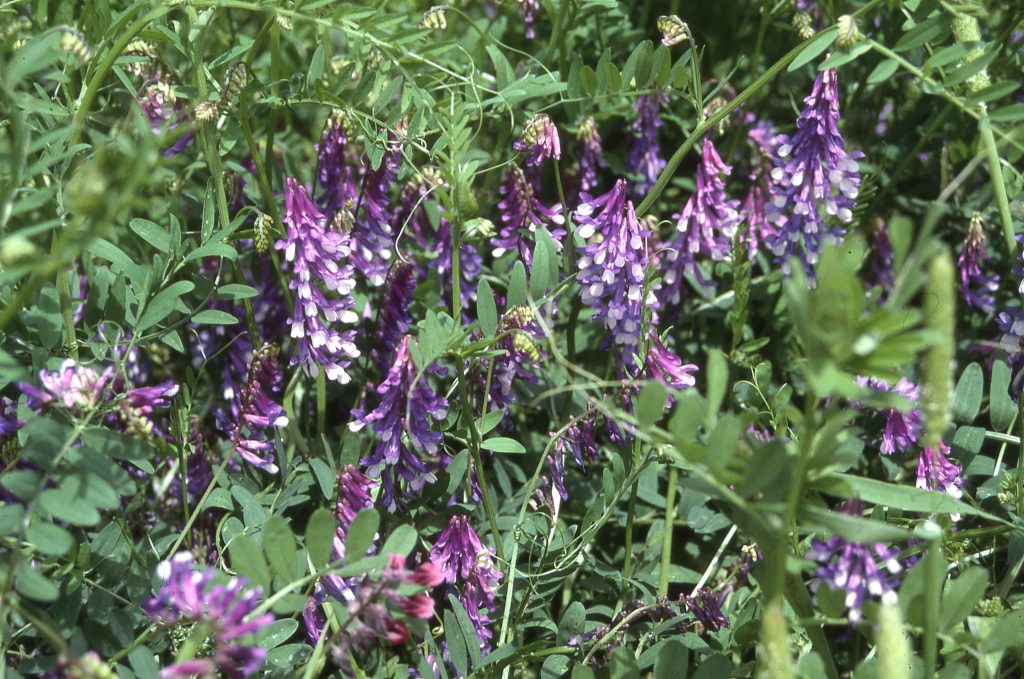
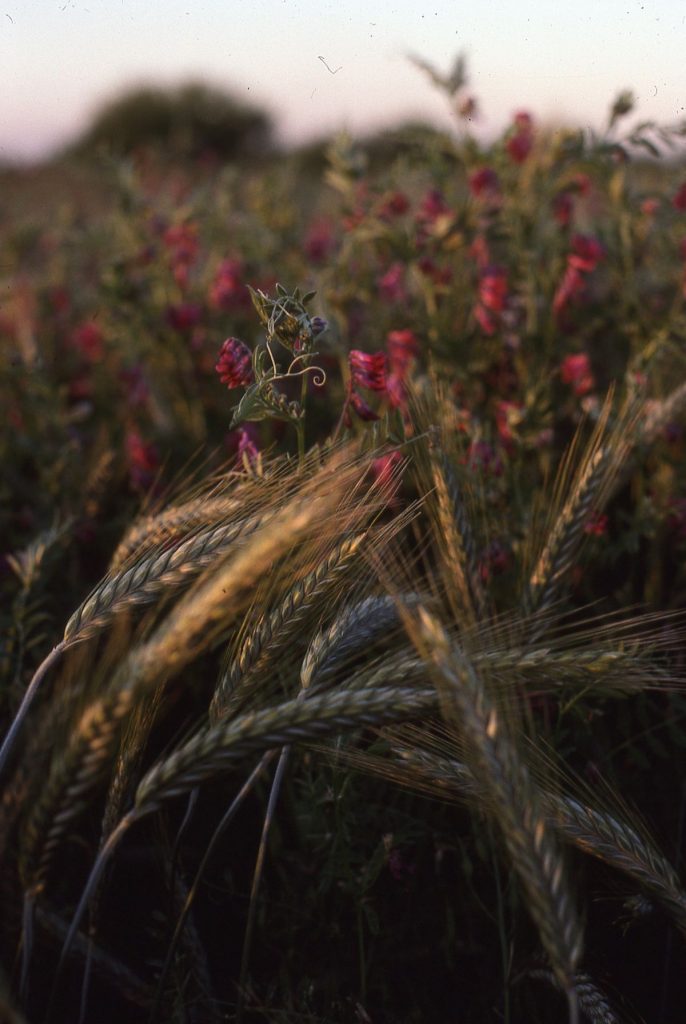
Non-legumes, such as corn and wheat, must take nitrogen from the soil where it is often a limiting factor in plant growth. By growing vetch in the winter and incorporating its plant material into the soil in the spring, we provide nitrogen for the future crops. The vetch cover crop also helps improve soil tilth, protects against erosion, reduces compaction, builds soil organic matter, and provides habitat for wildlife.
On some of our fields, the cover crop provides enough fertility to grow high yielding crops with very little additional fertilizer. For other fields, in addition to cover cropping, we apply poultry compost once or twice every four years to give our crops the nutrients they need to provide a good yield of high quality.
The Rotations
Pleasant Grove Farm land is divided broadly into two crop rotation systems. Our heavy, poorly draining soils operate in a two-year rotation, and our lighter soils follow in a three or four-year rotation.
The two-year rotation consists of one year of rice followed by one year of no-tilled green fallow. Green fallow is a year where a cover crop is grown and the land is rested between cash crops. Rice is grown in the summer and before harvest, vetch is broadcast onto most fields by airplane. When the rice is harvested the purple vetch is nearly 6 inches tall, but low enough to escape damage from the rice harvesters. It continues to grow and set seed over the winter and spring.
The following summer we harvest the vetch seed to sell to seed companies and other farmers. In late fall, the first rains sprout the vetch seed that has fallen to the ground and another cover crop grows over the winter. In the spring the vetch is incorporated into the soil and rice is planted again.
The three-year rotation consists of corn or popcorn, beans, and then wheat. Every winter vetch cover crop grows and is incorporated into the soil before the next crop is planted. Wheat is the one exception, as it also grows during the winter and spring. Sometimes the wheat grows with the vetch and the seed is harvested together and separated out in our seed cleaning facility.
The four-year rotation adds rice to the three year rotation. The rice is planted between the corn and bean years.
In all the rotations, once our crops are harvested, all of the remaining plant material (straw and stalks) is incorporated into the soil to return fertility and build soil organic matter. We never bale straw or remove organic material that could otherwise be building our soils.
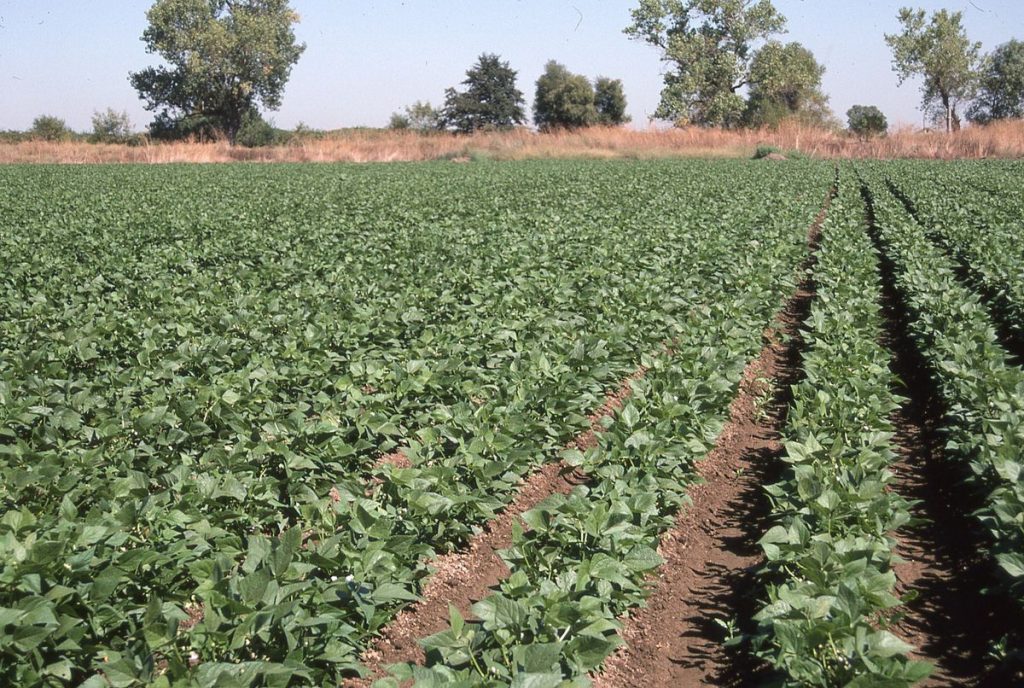
Weed Control
Healthy, fast growing plants are a key to weed control in organic systems. By providing a fertile soil, plants grow quickly and compete with weeds for sunlight and nutrients.
Crop rotation also helps prevent the buildup of weed populations by changing growing conditions from year to year. One year it may be flooded rice, and the next planted with row crops of beans or corn.
Cultivation is the main form of controlling weeds in our corn, popcorn and beans. Cultivation is carefully killing small weeds by disturbing the soil without damaging the main crop. Tractors mounted with shovels, knives and other equipment can do this with the help of a talented driver and very accurate GPS tractor guidance systems.
In our flooded rice fields, we use water management to control weeds, as well as to ensure good rice plant populations. We hope to add more information on our rice methods in the near future.
Pest Control
Like weed control, pest control is mainly through encouraging fast growing, healthy plants. A healthy plant can survive some insect damage while unhealthy plants cannot recover.
Disease Control
In our farming system, disease is controlled by planting modern varieties that are resistant to common diseases, and by using crop rotation to help prevent the buildup of disease in any given field.
